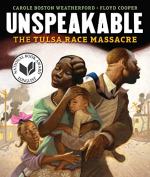|
This section contains 649 words (approx. 2 pages at 400 words per page) |

|
Racial Bias
The non-fiction story Unspeakable: The Tulsa Race Massacre gives examples of the way racial bias impacted the treatment of Blacks in the Greenwood area of Tulsa. These people did well for themselves despite the segregation laws they were required to follow. They were outnumbered when Whites attempted vigilante justice against a Black man accused of assault. The Blacks also suffered because the police would not help them when Whites attacked their homes and businesses.
Blacks were required to follow segregation laws that often meant they received inferior services as compared to their fellow Whites. It is indicated in the story: “Segregation laws called for separate neighborhoods, schools, phone booths, and railroad and streetcar coaches” (5). Often the facilities designated for Black use were substandard. In the case of Greenwood, however, some said the education Black children received was superior to that received by White children.
Whites thought nothing...
|
This section contains 649 words (approx. 2 pages at 400 words per page) |

|




